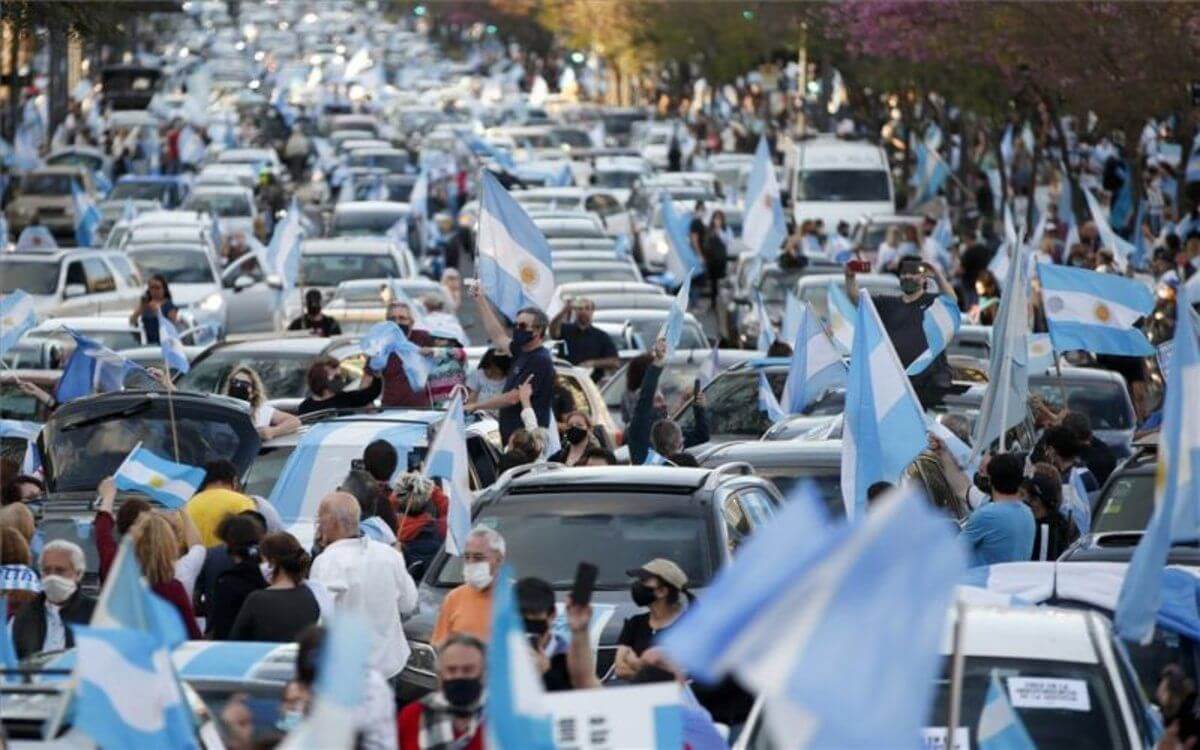Thousands of Argentinians once again took to the streets in various cities across the country to protest against government mismanagement by President Alberto Fernández, criticizing his inability to contain the coronavirus pandemic or protect the economy from what they fear may be irreparable damage.
The #12O demonstrators are protesting against the extension of strict quarantine measures, the loss of economic activity and jobs, corruption, and the subversion of the constitution and individual freedoms.
This comes in the wake of the President’s decision to extend ‘preventive isolation’ measures for another two weeks and marks the fifth protests undertaken in recent times against what citizens see as a ‘dual presidency’. In their eyes, Fernández is merely the figurehead president, but the real power lies in the hands Vice President Cristina Fernández de Kirchner—who actually served as president from 2007 to 2015—and her think tank Patria.
It is believed that the vice president is using her influence over Fernández to bring an end to corruption investigations into her and her family. She has previously been investigated for allegedly conspiring with the Iranian government to obfuscate the role of Iranian officials in the bombing of a Jewish community center in Buenos Aires that resulted in 85 deaths. She was also implicated in a corruption scandal during the presidency of Macri, wherein she was accused of corruption alongside her husband Néstor Kirchner, who was coincidentally the President before his wife assumed office.
In fact, one of the protests took place outside the vice president’s home in capital city Buenos Aires, while another took place outside the presidential residence in Olivos.
The number of coronavirus cases in the country has now surpassed 900,000, with over 24,000 deaths. In fact, the numbers are still rising. On October 7, the country tallied its highest ever daily total of new cases, registering 16,447 new infections.
Simultaneously, Argentina owes the International Monetary Fund (IMF) over $44 billion from 2018 under Mauricio Macri’s administration.
At the turn of the year, Argentina reported that its inflation rate in 2019 was 53.8%, the highest such figure since 1991, and the second-highest in Latin America after only crisis-torn Venezuela, demonstrating the sheer magnitude of the situation.
The cost of living has increased by close to 4%, and prices in the health, communications, home maintenance equipment, and food industries have sky-rocketed as well. Despite the tight monetary programs implemented in late 2018 after a currency crisis, Argentina has not only failed to reduce inflation but has also deepened the country’s recession.
This has led to widespread unrest and protests over the last few months. Against this backdrop, Former Argentinian President Eduardo Duhalde, who ruled the country from 2002 to 2003, delivered an ominous message that hints at the possibility of a military coup amid political and economic turmoil in the country.
While Fernández conceded that the right to protest is enshrined in the democratic principles of the nation, he urged calm, especially during the ongoing pandemic. Nevertheless, repeated demonstrations do not bode well for an already fragile administration.
Protests Across Argentina Against Government Corruption and Mismanagement
This comes in the wake of the President’s decision to extend ‘preventive isolation’ measures for another two weeks and marks the fifth protests undertaken in recent times.
October 14, 2020

IMAGE SOURCE: NATACHA PISARENKO / APThe cost of living has increased by close to 4%, and prices in the health, communications, home maintenance equipment, and food industries have sky-rocketed as well.
